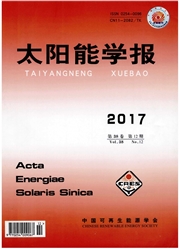

 中文摘要:
中文摘要:
利用五道梁地区1993年9月-1997年12月TBQ4-1型辐射仪器的分光观测结果,对高原地区的光合有效辐射(PAR)进行了分析,给出了五道梁地区PAR在总辐射中所占比例叩值的日、月变化特征。五道梁地区叩值日变化冬季表现为早晚大、正午前后小,夏季则从早到晚减小;五道粱地区月平均呀值季节变化较明显,冬季最小,春季次之,秋季较大,夏季最大。光合有效辐射与红外辐射是五道梁地区总辐射的主要组成部分,紫外辐射占总辐射的份额较小。五道梁地区平均η值较北京、栾城、额济纳旗及得克萨斯小,较成都、昆明、太湖、海北、张掖大,与加利福尼亚相当。给出了高原北部η的气候学计算式并在计算式中引入了日照百分率的影响。
 英文摘要:
英文摘要:
Using the data observed with the TBQ-4-1 from Sep. 1993 to Dee. 1997, the daily and monthly features of r/ were given over Wudaoliang. For the daily η, it is big in the morning and afternoon but small around noon on the winter day. The η is decreased from morning to afternoon while on the summer day. For the monthly average η, its seasonal variation is apparent, which is biggest in summer and smallest in winter. And values of ηin spring and autumn are less than that in summer and bigger than that in winter. The ηin autumn is bigger than that in spring. PAR and infrared radiation are the main components of global radiation in Wudaoliang while ultraviolet radiation is a small component to global radiation. The monthly mean η over Wudaoliang is smaller than that over Beijing, Luancheng, Ejinaqi and Texas and bigger than that over Chengdou, Kunming, Taihu, Haibei and Zhangye and correspond to that over Karaforlia. And the climatology formula is given over northern Tibetan Plateau in which the sunshine percentage is introduced.
 同期刊论文项目
同期刊论文项目
 同项目期刊论文
同项目期刊论文
 期刊信息
期刊信息
